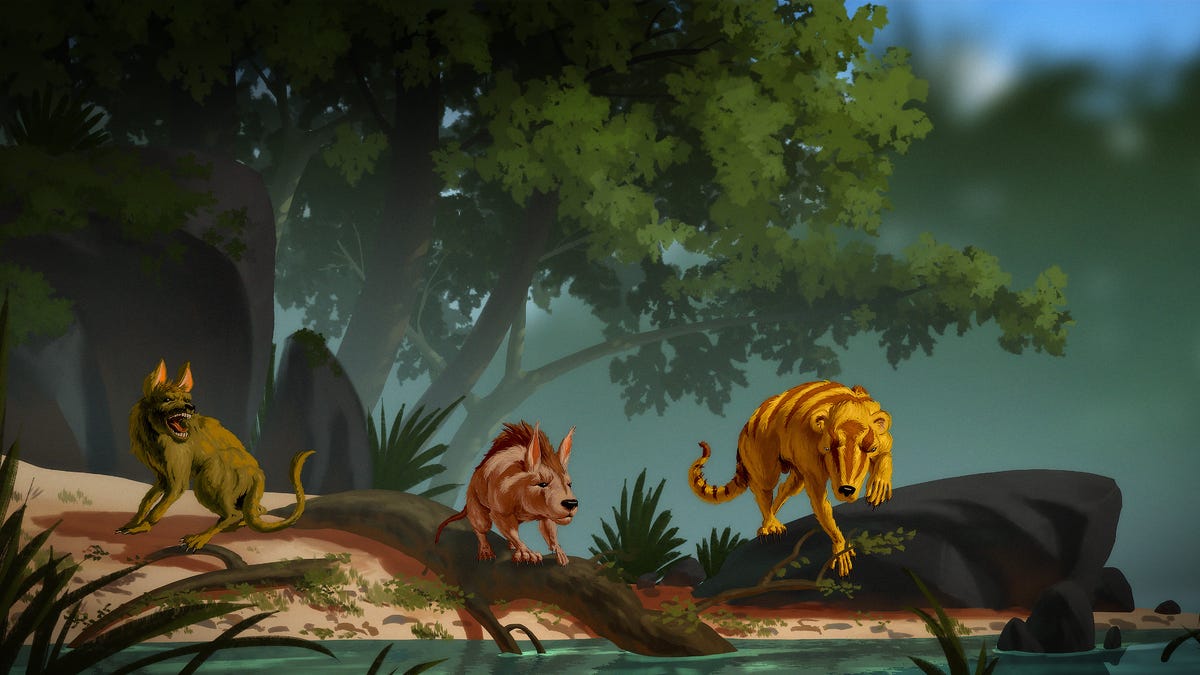Puffy-cheeked prehistoric creature named after The Hobbit character
The early ancestors of horses, cows and other hoofed creatures could have big implications for the evolution of mammals.

An artist's rendering of the Conacodon hettingeri, Miniconus jeanninae and Beornus honeyi.
The discovery of a previously unknown creature is even more fun when we can link it to popular culture. It's in our natures to derive a connection to something we already know, and we definitely know our Lord of the Rings.
New research published in the Journal of Systematic Palaeontology has introduced us to three new ancient species, recently discovered by a team from the University of Colorado in Boulder, after analysis of unearthed lower jaw bones and teeth. The creatures were prehistoric mammals, ranging in size, who lived all over North America only a few hundred thousand years after dinosaurs were wiped out.
Named Miniconus jeanninae, Conacodon hettingeri and Beornus honeyi, the three creatures varied in size, further lending evidence to the idea that evolution happened more rapidly than originally projected after the dinosaur extinction. They are part of a type of placental mammal group called archaic ungulates -- or "condylarths" -- and are the early ancestors of horses, cows and other hoofed mammals of today.
The team used phylogenetic techniques to examine the teeth and lower jaw bones of 29 fossil condylarth species, discerning how they may have differed from each other in both appearance and behaviors, as well as how they compared to other condylarths in the western US.
Beorn was portrayed by Mikael Persbrandt in the most recent films.
The Beornus honeyi has grabbed the attention of pop culture fans, however, having been named for Beorn, a character in The Hobbit who offered sanctuary to the hobbits and dwarfs while they were escaping goblins.
It was so named because of its inflated molars, giving the appearance of puffy cheeks. In the books and films, the character Beorn is described as a large and powerful skin-changer, or shapeshifter, who could transform into a bear and featured similarly puffed cheeks.
The name notwithstanding, the discovery of these condylarths supports the notion of quick species diversification.
"When the dinosaurs went extinct, access to different foods and environments enabled mammals to flourish and diversify rapidly in their tooth anatomy and evolve larger body size," said Madelaine Atteberry, the study's lead author.
"Previous studies suggest that in the first few hundred thousand years after the dinosaur extinction there was relatively low mammal species diversity across the Western Interior of North America," she added, "but the discovery of three new species in the Great Divide Basin suggests rapid diversification following the extinction."

